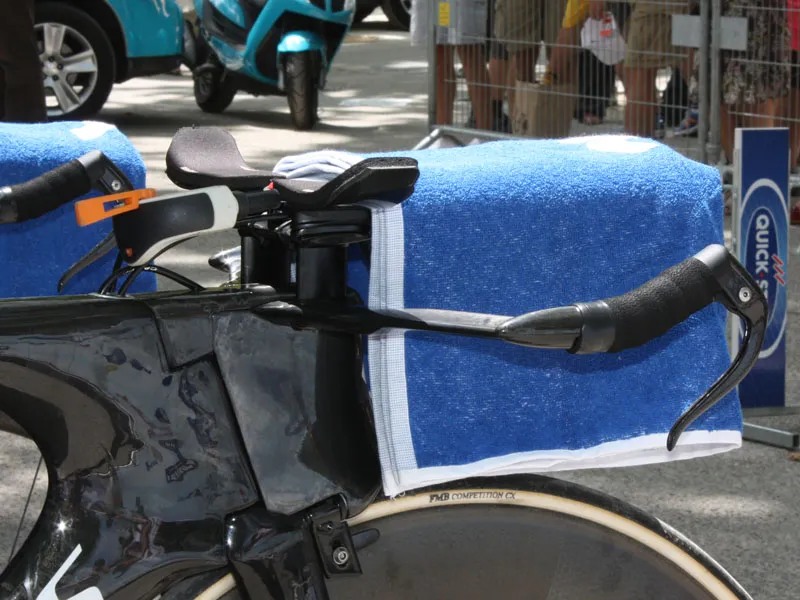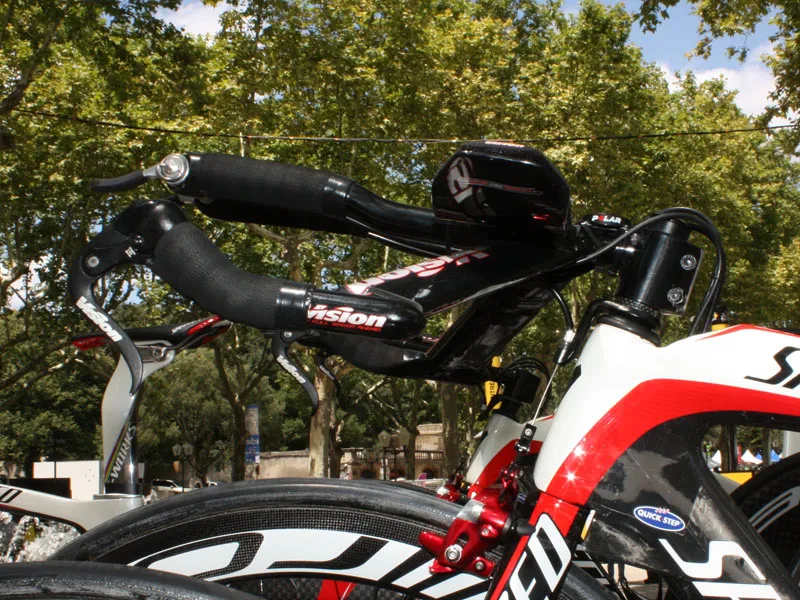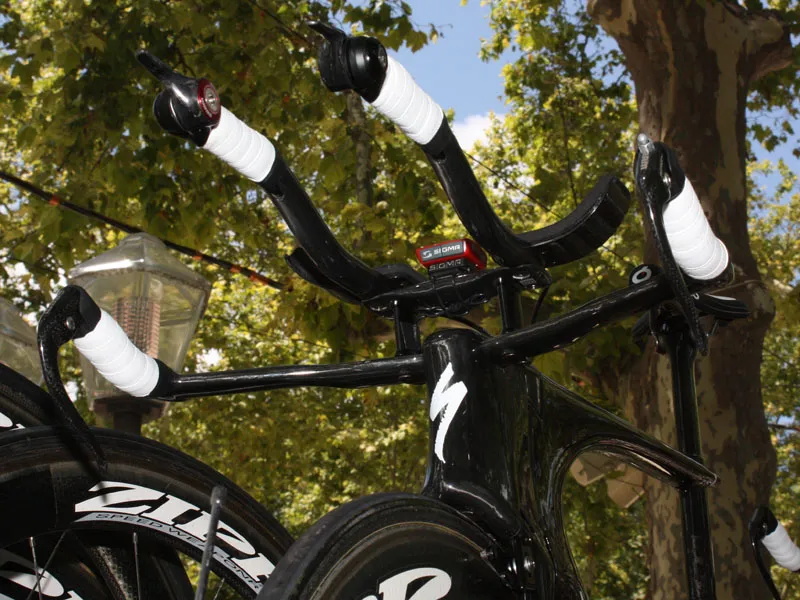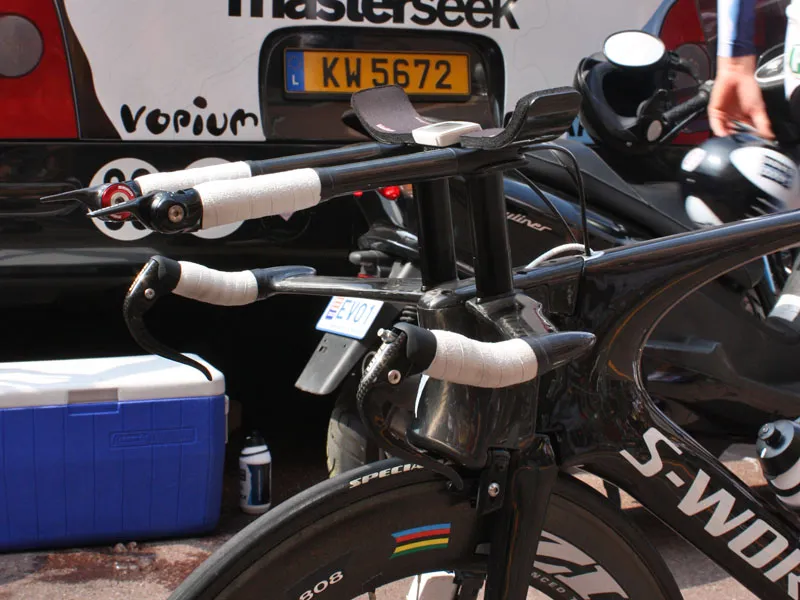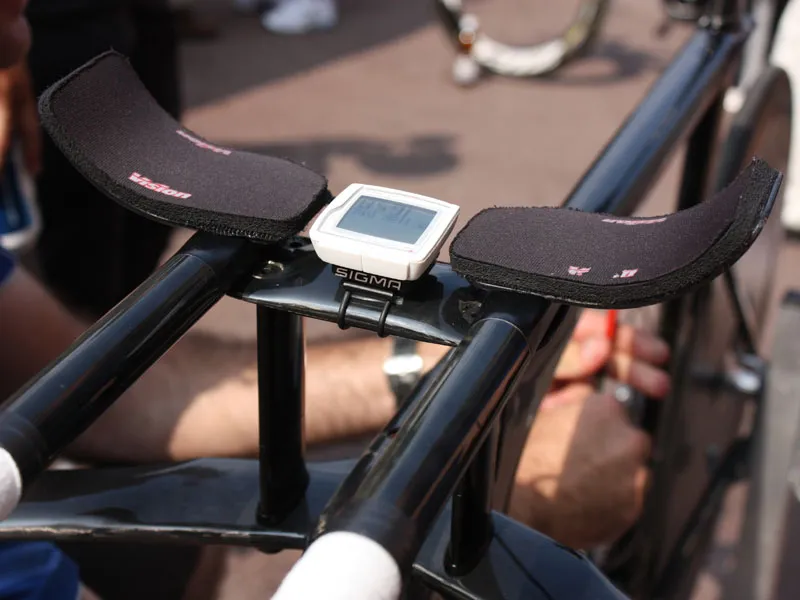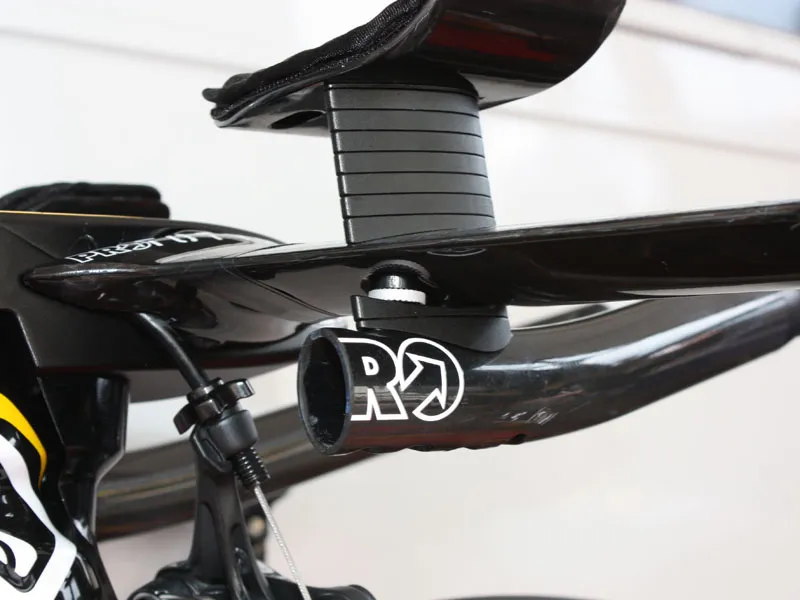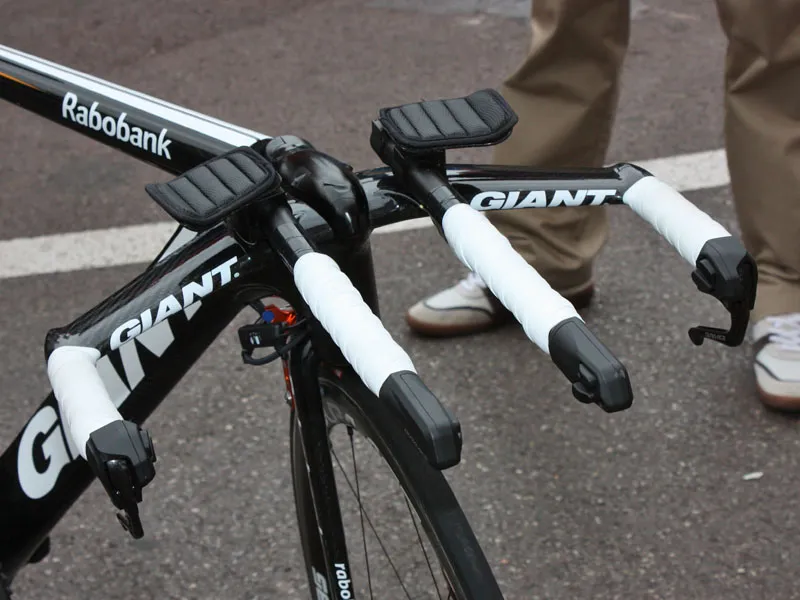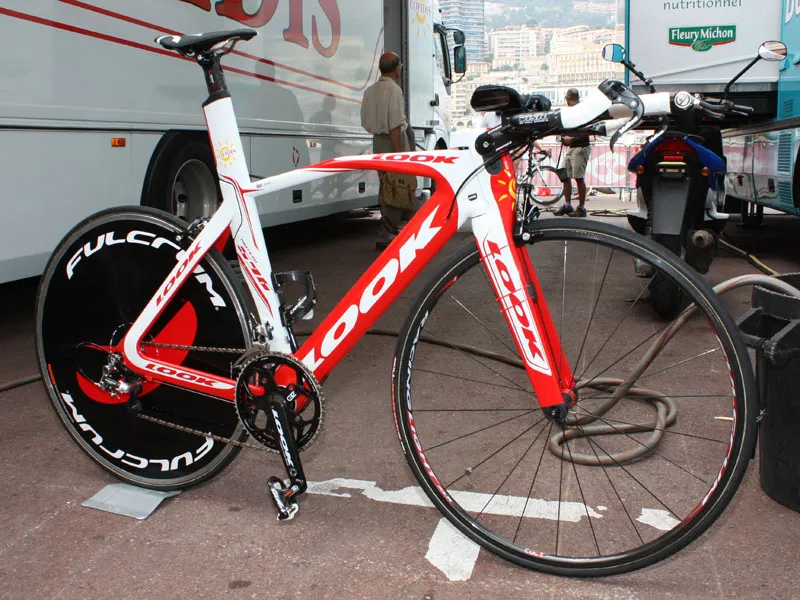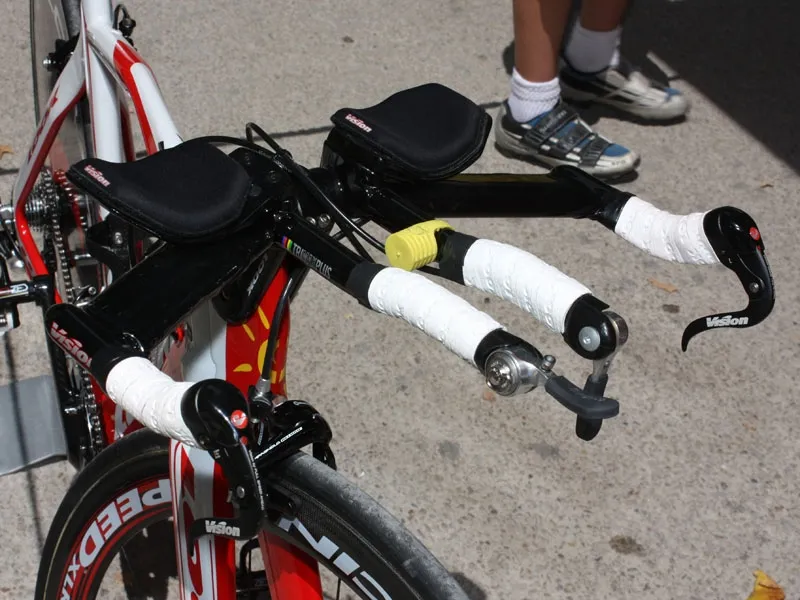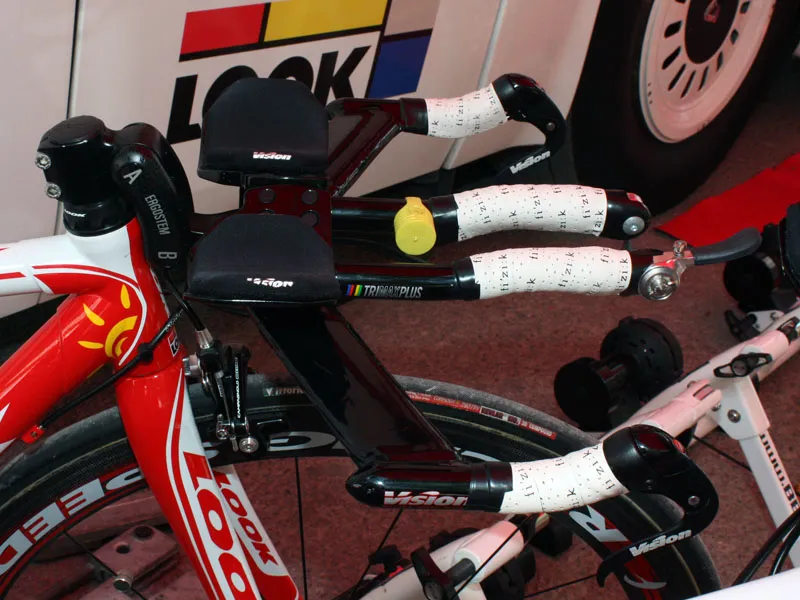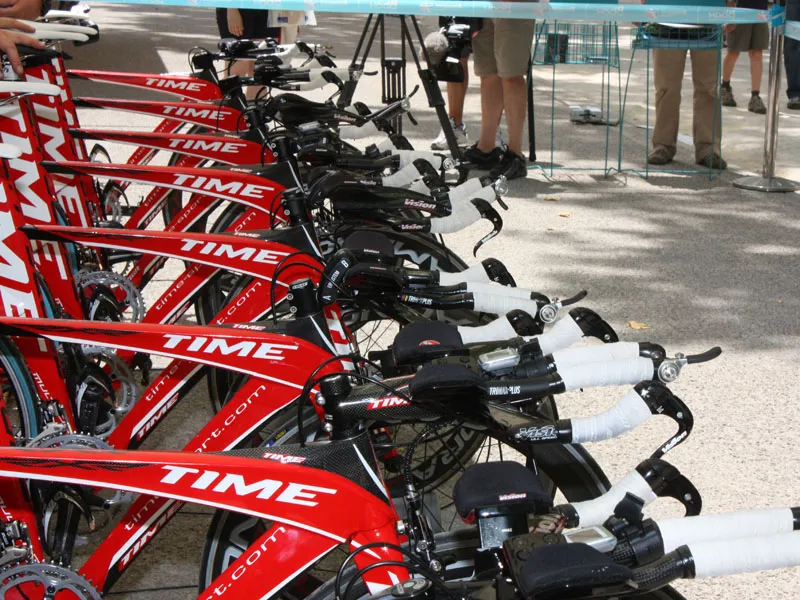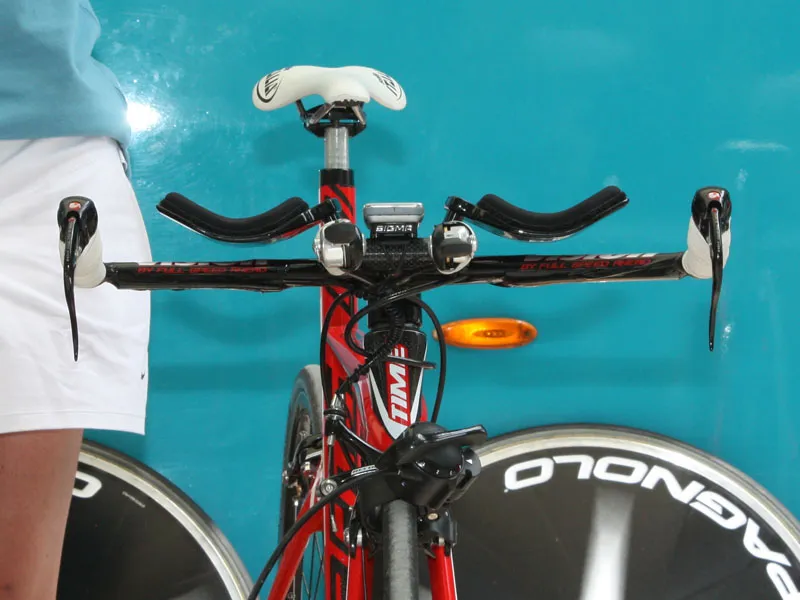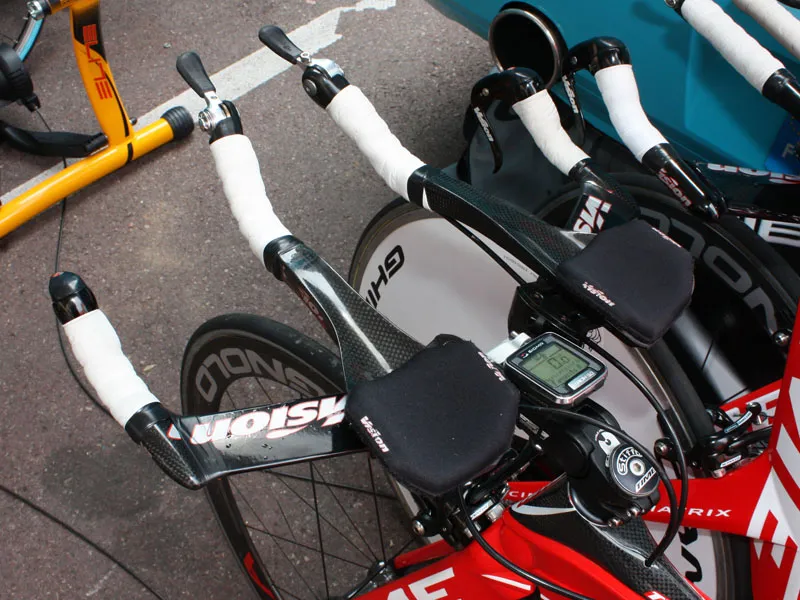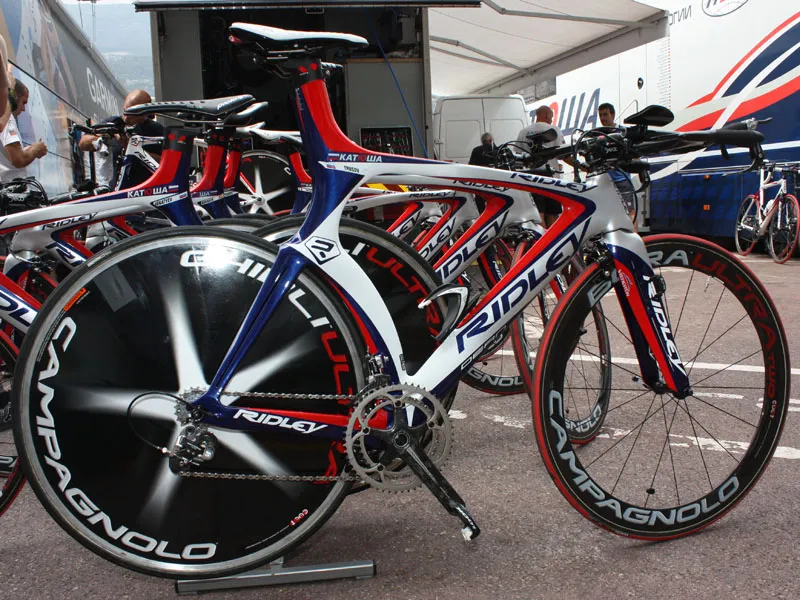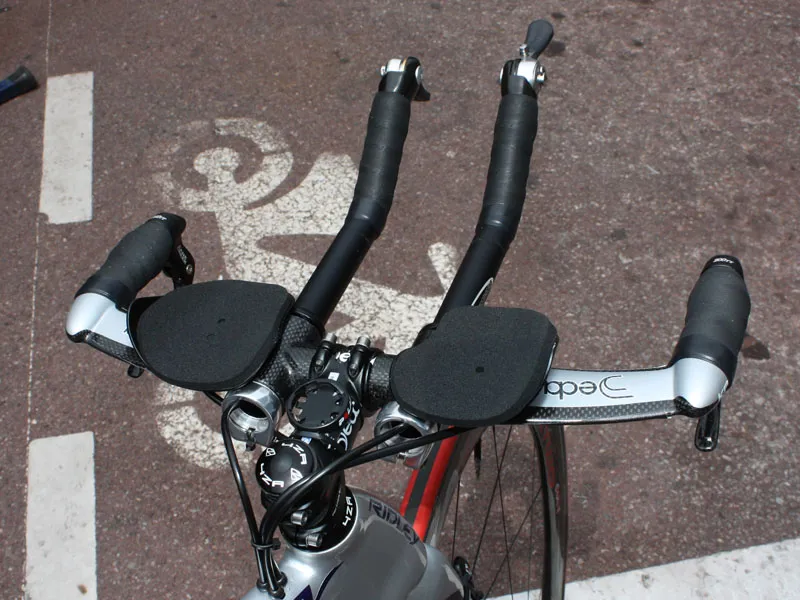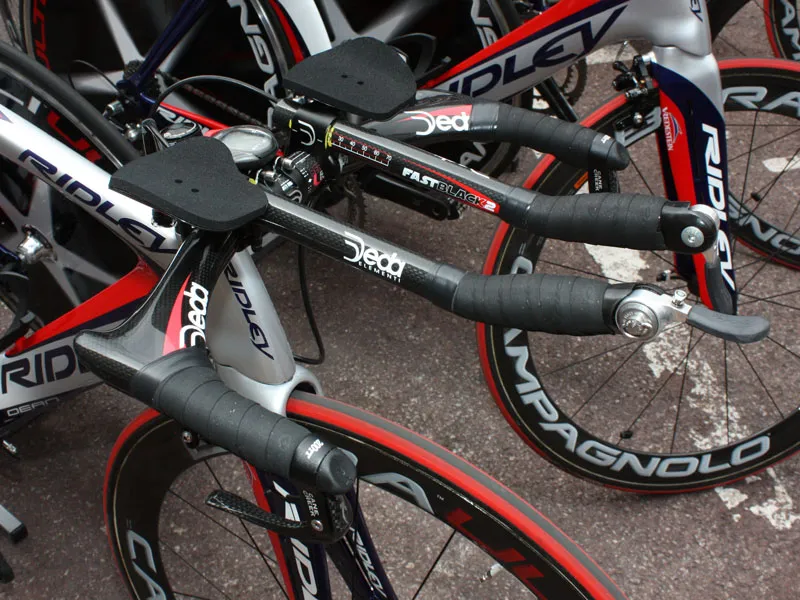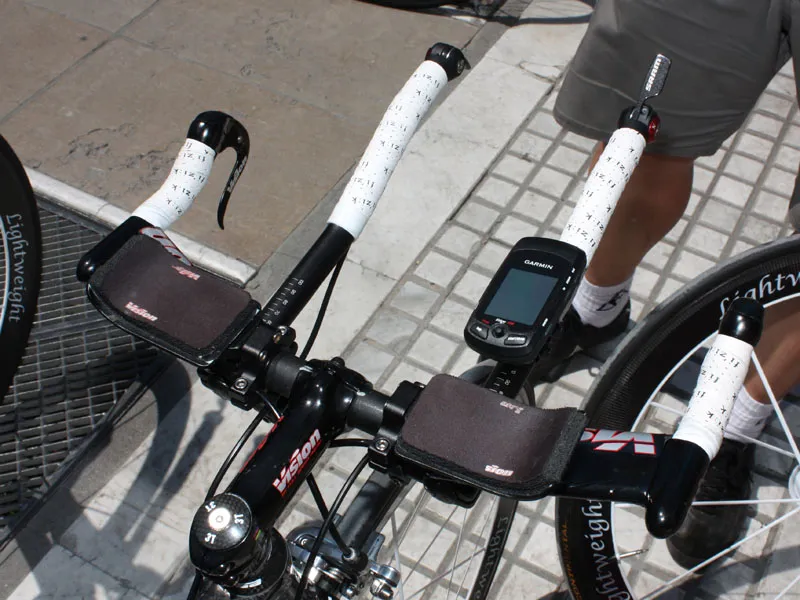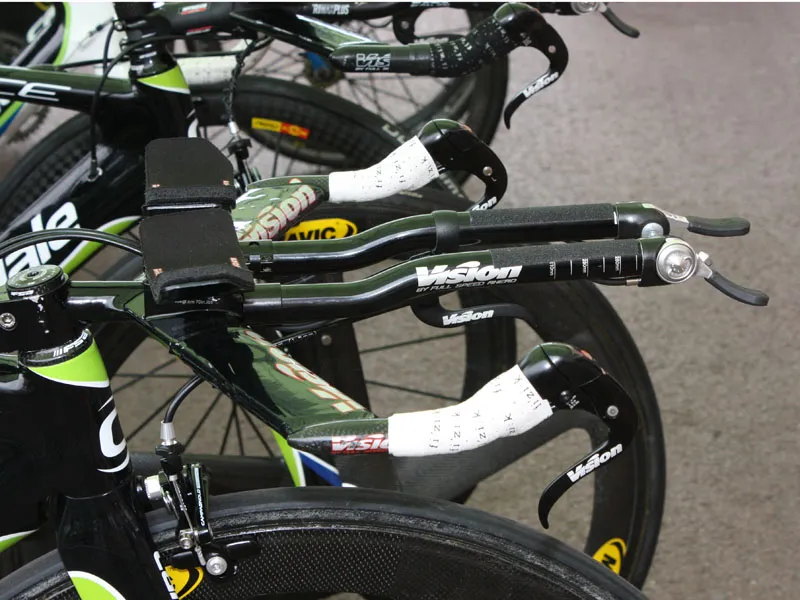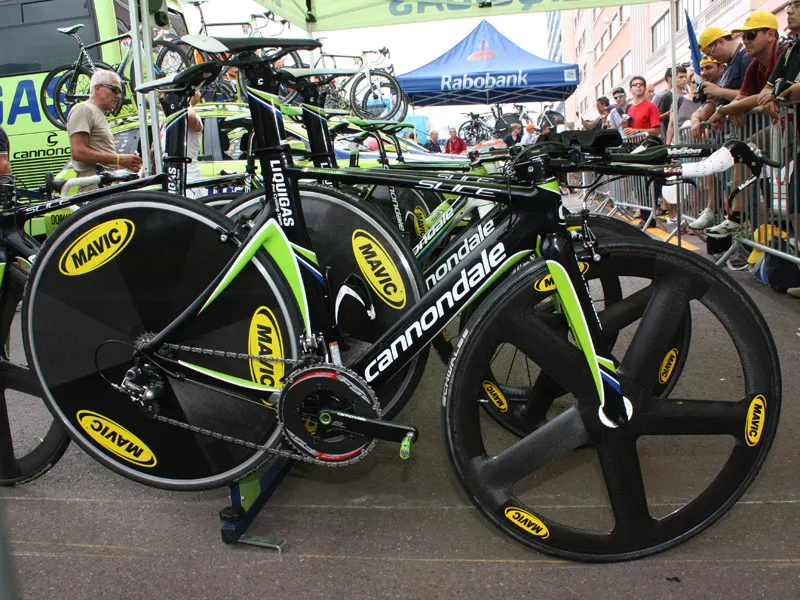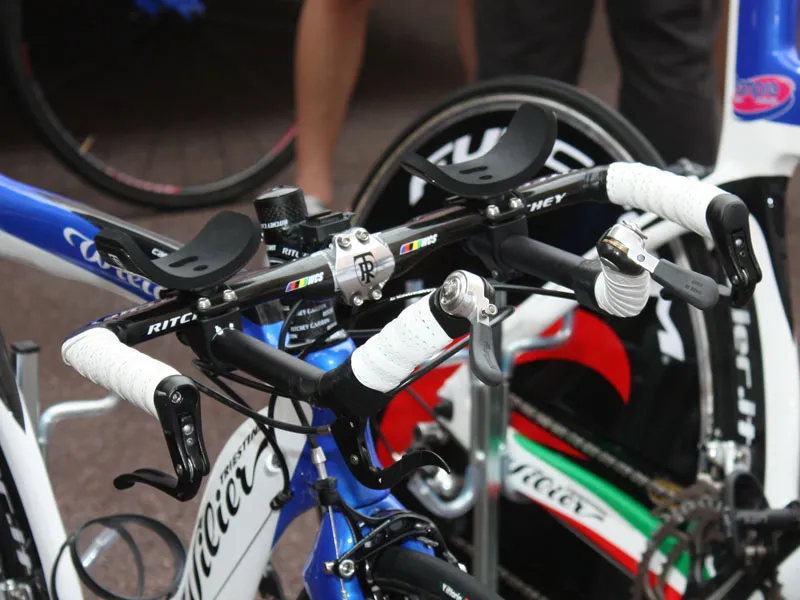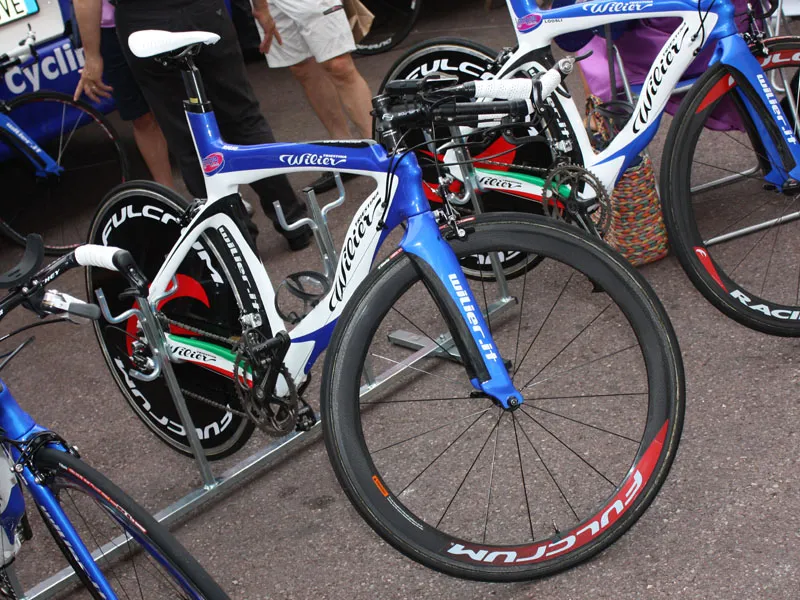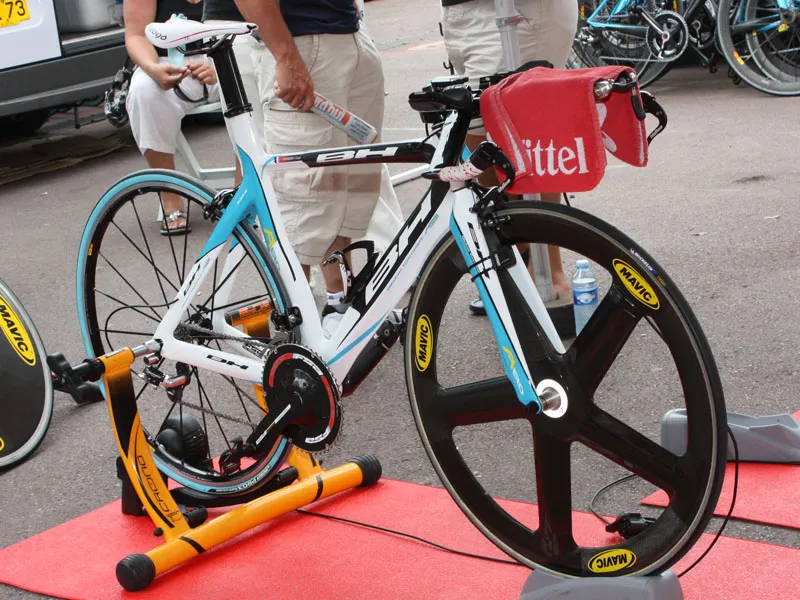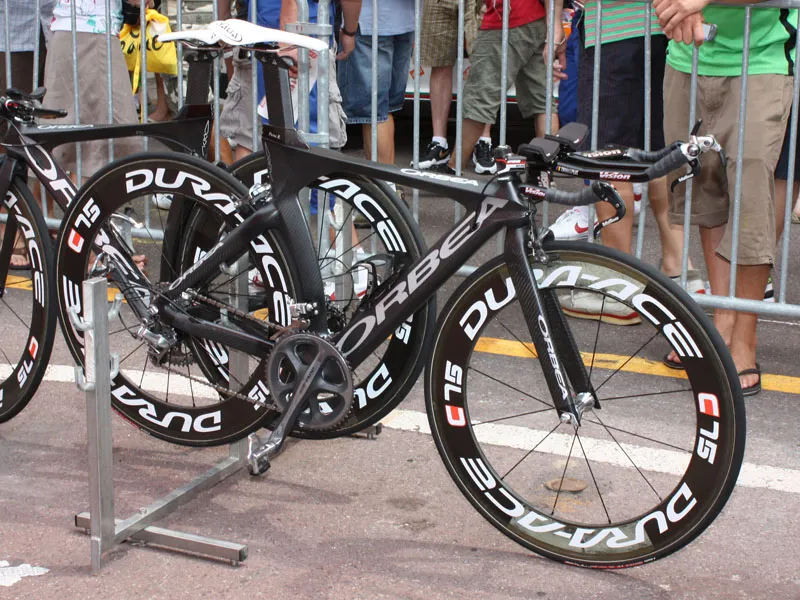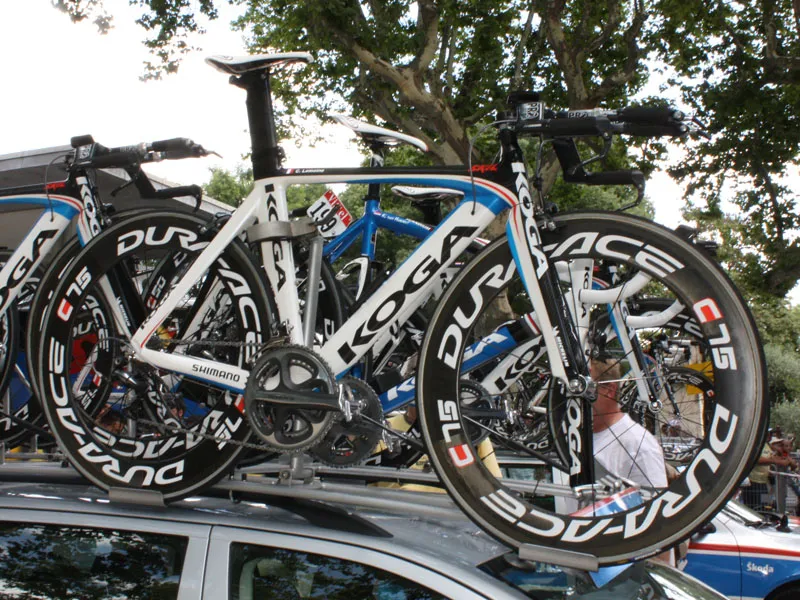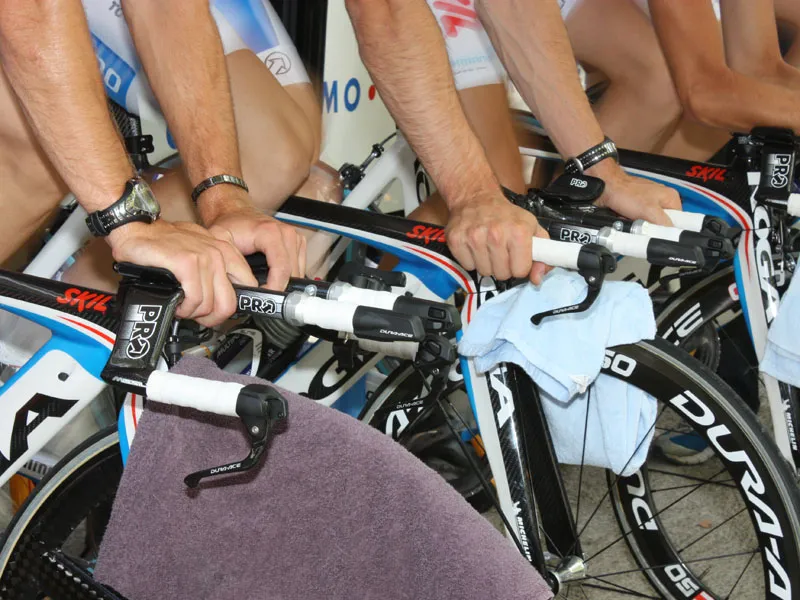The UCI, the governing body for competitive cycling, recently published a guide called "Technical Regulations for Bicycles: a Practical Guide to Implementation", hoping that it would offer a “definitive interpretation in order to facilitate understanding and application of the Regulations by international commissaires, teams and manufacturers.”
However, trying to determine the meaning of the document is difficult.
Imagine you're a team director or sponsor with countless hours and heaps of money invested in wind tunnel time and rider set-up sessions over the previous off-season.
Imagine what your reaction might be heading into the biggest bicycle race of the season when you are presented with this document:
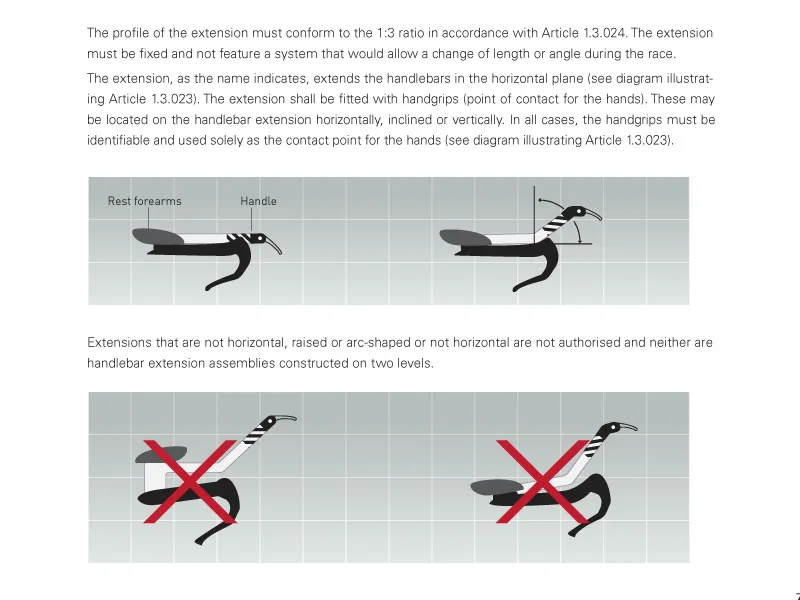
What's your course of action and what exactly is a two-level bar?
Taken literally, the "constructed on two levels" description and the accompanying diagram implies that riders and teams can no longer use any means to raise the extensions relative to the base bar.
Moreover, the description could also be interpreted to mean that base bars with drop are outlawed as well since either situation would put the outer grips and extensions at appreciably different heights.
As a result, many of the time trial bar setups we've seen at this year's Tour de France almost look as if they could have been hewn from a single flat plate of material – the extensions are dead-straight and the base bars have no drop whatsoever, in marked contrast to what we've commonly seen in the past.
However, other bar setups – say that of Saxo Bank rider Jens Voigt, who sadly had to retire after a gruesome crash in stage 16 – look to clearly violate the rule, yet the commissaries allowed them to start both the stage 1 individual time trial in Monaco and the team time trial three days later around Montpellier. So why the discrepancy?
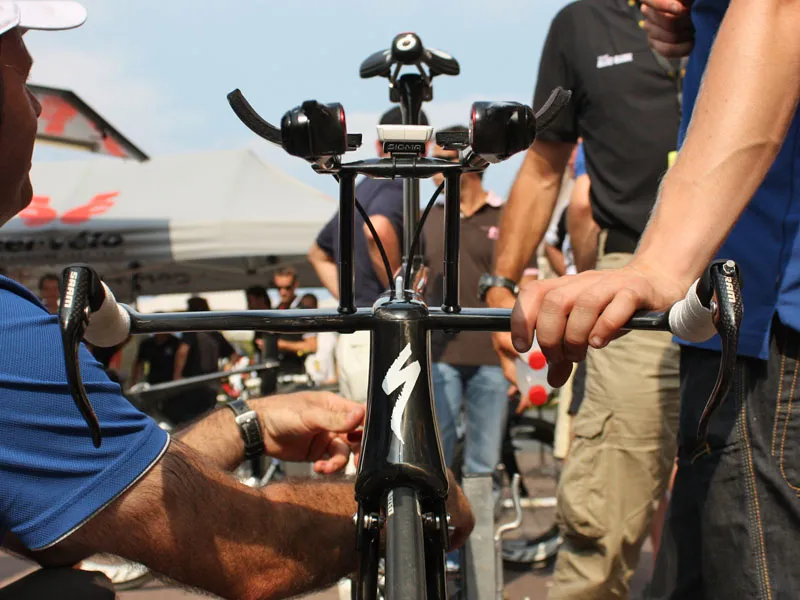
Voigt's aerobar setup looks more like an aeroplane from this angle than a bicycle handlebar.
According to the UCI, the new guide "does not replace Articles 1.3.001 to 1.3.025 of the UCI Regulations [those describing allowable equipment], but instead complements them and illustrates the technical rules defined therein.
The objective of this document is to offer a definitive interpretation in order to facilitate understanding and application of the Regulations by international commissaires, teams and manufacturers."
In this particular case, the 'dual level' clause is meant to clarify rule 1.3.023, which states that handlebar extensions used in time trials must place the rider's forearms "in the horizontal plane" and that the angle between the upper arm and forearm not to exceed 120 degrees "when in the racing position".
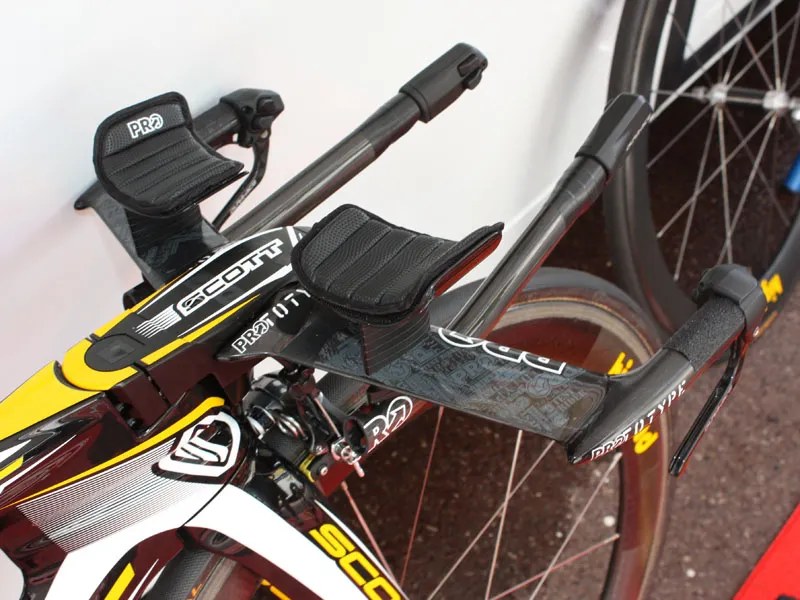
So is this bar constructed on two levels or isn't it?
Regardless, what the UCI is trying to do here is further prevent riders from adopting the so-called 'praying mantis' position popularised by Levi Leipheimer (Astana) and Floyd Landis.
Even when forearm rests and aero extensions are oriented at the same height, the UCI fears that riders using 'two-level' bars will simply be able to move their elbows down to the base bar below, thus effectively angling their forearms upwards and shielding their torsos with their hands for a more aerodynamic position.
Teams such as Saxo Bank, High Road-HTC and Rabobank apparently have already communicated with the UCI in regard to the rule's intended meaning and gained prior approval for their seemingly illegal bar setups.
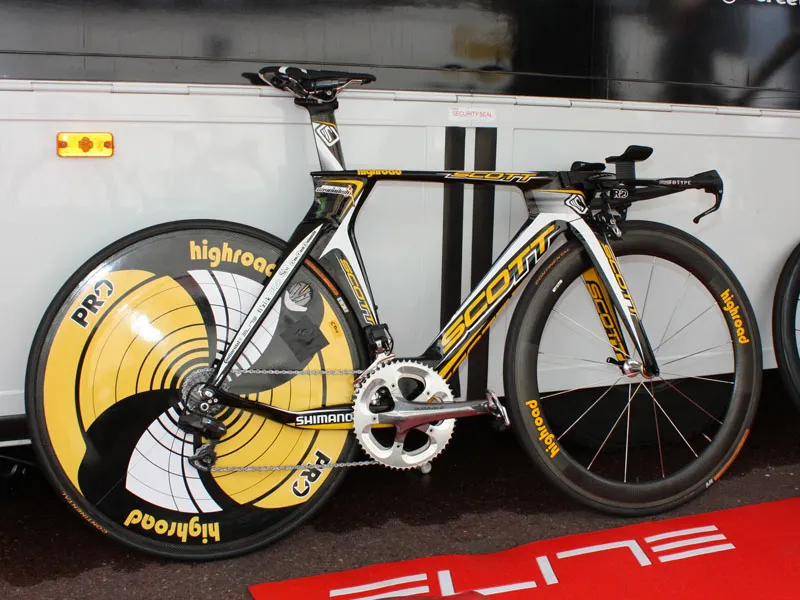
Columbia-High Road has made the switch from their previous 'TechDev' bikes to Scott's new Plasma 3.
Thus far we've noticed no riders exploiting a 'two-level' bar setup as the UCI had feared and we would guess other teams will eventually revert back to their preferred setups in the near future now that the precedent has been set.
However, whether or not we'll see any changes in time for the upcoming individual time trial around LakeAnnecy remains to be seen.
On a more general note, however, this issue only further highlights the UCI's inability to convey its technical rulings in a concrete and unambiguous manner that engineers, mechanics and designers can understand.
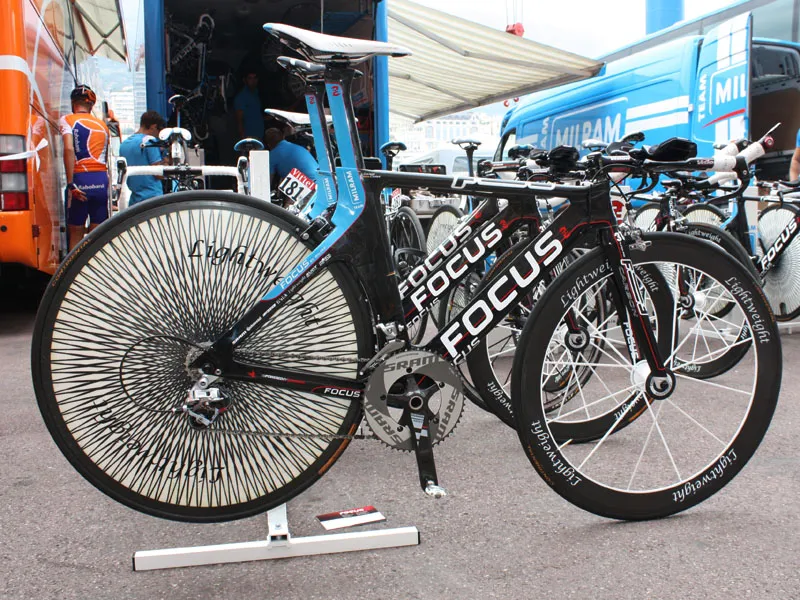
Milram's time trial bike is designed by Andy Walser, who has long provided top pros with custom aero machines.
Much as the sport's governing body is maligned for its supposed evil quest against advancing technology in the sport, the underlying goal of leveling the playing field somewhat and ensuring rider safety is at least admirable in its intent, if not its execution.
However, as has become somewhat typical, what comes forth in the text is often disappointingly confusing.
Want even more confusion? Check out the UCI rules and guides for yourself:
- "General organization of cycling as a sport"
- "Technical regulations for bicycles, a practical guide to implementation"
Follow BikeRadar on Twitter at twitter.com/bikeradar
